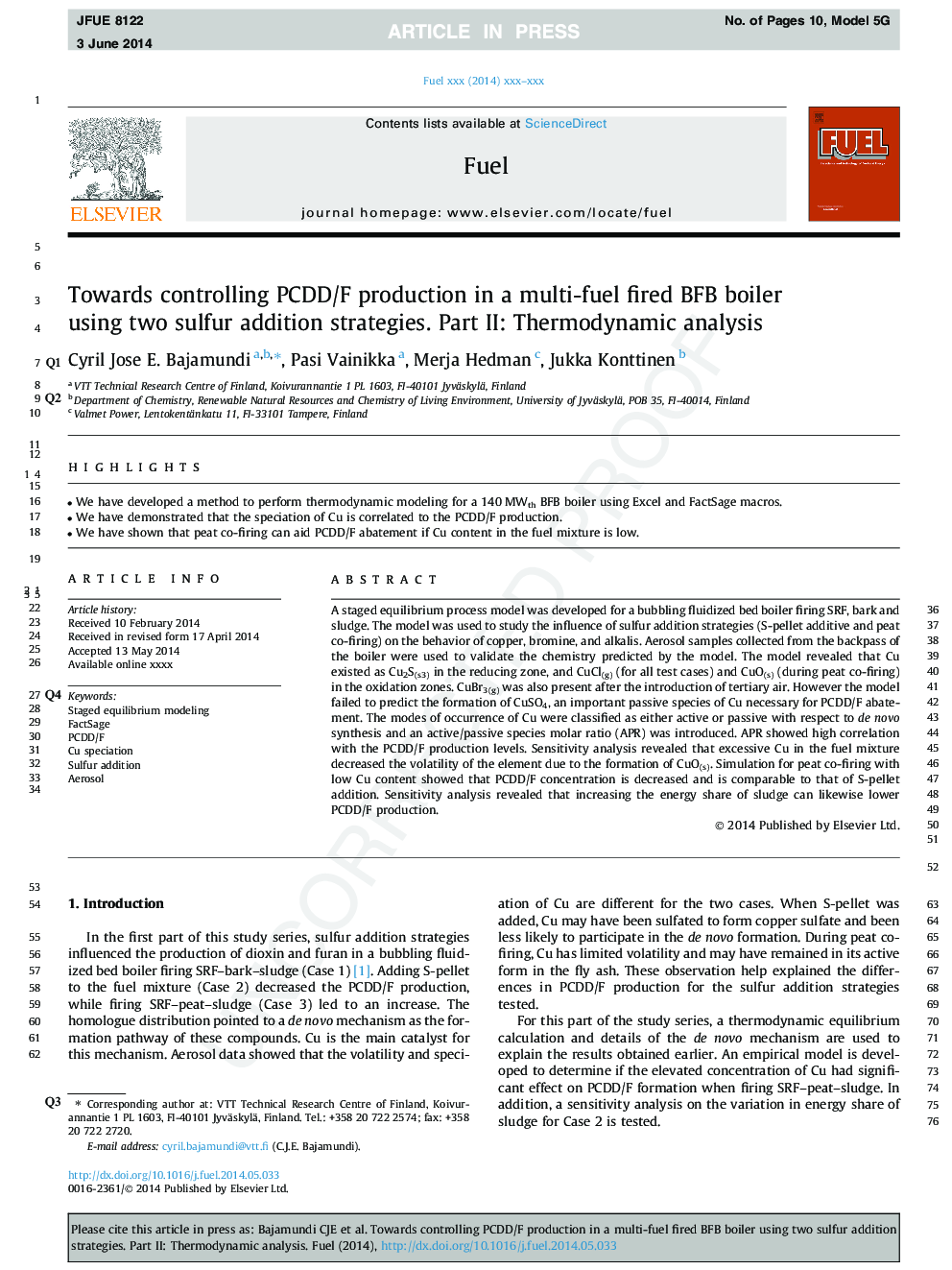| Article ID | Journal | Published Year | Pages | File Type |
|---|---|---|---|---|
| 6637321 | Fuel | 2014 | 10 Pages |
Abstract
A staged equilibrium process model was developed for a bubbling fluidized bed boiler firing SRF, bark and sludge. The model was used to study the influence of sulfur addition strategies (S-pellet additive and peat co-firing) on the behavior of copper, bromine, and alkalis. Aerosol samples collected from the backpass of the boiler were used to validate the chemistry predicted by the model. The model revealed that Cu existed as Cu2S(s3) in the reducing zone, and CuCl(g) (for all test cases) and CuO(s) (during peat co-firing) in the oxidation zones. CuBr3(g) was also present after the introduction of tertiary air. However the model failed to predict the formation of CuSO4, an important passive species of Cu necessary for PCDD/F abatement. The modes of occurrence of Cu were classified as either active or passive with respect to de novo synthesis and an active/passive species molar ratio (APR) was introduced. APR showed high correlation with the PCDD/F production levels. Sensitivity analysis revealed that excessive Cu in the fuel mixture decreased the volatility of the element due to the formation of CuO(s). Simulation for peat co-firing with low Cu content showed that PCDD/F concentration is decreased and is comparable to that of S-pellet addition. Sensitivity analysis revealed that increasing the energy share of sludge can likewise lower PCDD/F production.
Related Topics
Physical Sciences and Engineering
Chemical Engineering
Chemical Engineering (General)
Authors
Cyril Jose E. Bajamundi, Pasi Vainikka, Merja Hedman, Jukka Konttinen,
